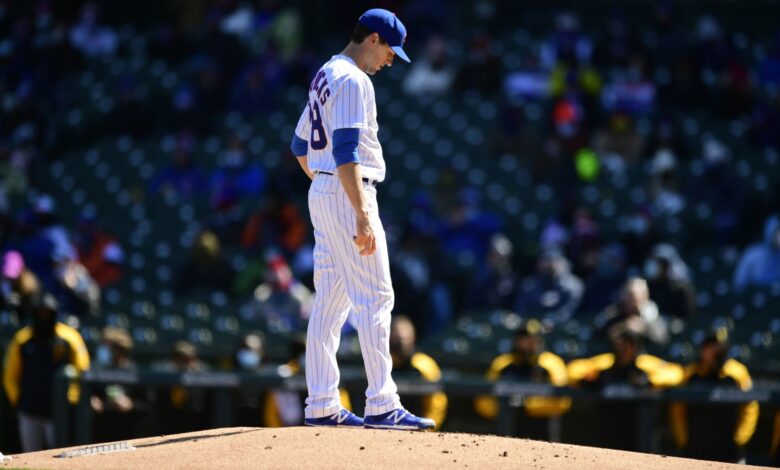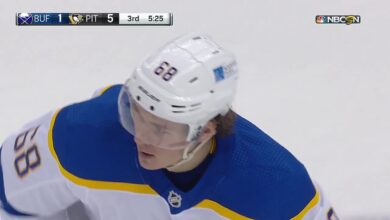Keys to a fast start

[ad_1]
The regular season is just a few days old, and my head is already spinning.
Major League teams play at a higher rate than those in any other major professional sport, and the daily influx of numbers is staggering for fans and fantasy managers alike. April is always a tough month for managers, who have to constantly balance being patient with their players while not wanting to miss out on the next big thing from the waiver wire.
Here are my best tips to find stability amidst the chaos.
The 70-30 split
The 70-30 split is an arbitrary number that I made up, but it seems sensible. No matter the size of your league, the players you selected with the initial 70 percent of your picks deserve a longer leash than those taken in the final 30 percent. The 70 percenters formed the basis of your team and are likely in your starting lineup. The 30 percenters were streamers, backups, and dart throws. The cutoff isn’t absolutely at the 70-30 divide, but you get the picture. Feel free to get aggressive in dropping your late-round picks while resisting the urge to do the same with players who you picked in the beginning or middle of the draft.
Look at skills, not results
The knee-jerk reaction is to drop the starter who gives up five runs or the hitter who is batting .118 through a handful of games, but the small-sample stats early in the season cannot be trusted. Instead, wise managers combine the surface stats with underlying skills. A batter who is hitting .180 with 11 strikeouts is a better drop than one who is batting .108 with two strikeouts. And a pitcher who gave up five runs with a 7:2 K:BB ratio should likely be retained over someone who gave up three runs with a 2:4 K:BB ratio. Those who take this game very seriously can look at information such as Statcast data, but even those numbers will swing wildly early in the season. In general, control over the strike zone (compared to career norms) is a good indicator for both hitters and pitchers.
Chase youth
Veteran players sometimes take a major step forward in the middle of their careers. For example, I made it a priority to take a chance on the breakout potential of 31-year-old Robbie Grossman in my 2021 drafts. But in general, a veteran player who starts the season well is simply on a hot streak. Fantasy managers are more likely to get a sustainable breakout player by chasing those who have yet to hit their prime. This is especially true of young pitchers, who can use small changes such as control gains or the development of a new pitch to suddenly take off.
Track velocity changes
When it comes to pitchers, velocity is an incredibly important factor. Pitchers who gain velocity can have increased success with the same arsenal and those who experience a sudden drop in velocity are likely to get hit hard in future starts. Also, velocity drops sometimes offer a clue that a pitcher is not completely healthy and will soon land on the IL. Tracking the velocity of every pitcher is beyond the time commitment for most fantasy managers, but everyone can keep their eyes peeled for the most notable changes.
Get aggressive with setup men
The reliever position is the only one where players regularly go from being coveted roster members to waiver-wire fodder overnight and vice versa. And this is especially true early in the season when many closers have earned themselves only a short leash for their ninth-inning role. As soon as a closer blows a couple of saves, the next-in-line reliever needs to be added by astute fantasy managers. For closers with little experience in the role, even one blown save might be enough to warrant an aggressive roster move. To be clear, I’m not suggesting that you drop a closer after he blows a save or two. Rather, you need to add his setup man at the expense of a different player and then monitor the situation for a few days. This is especially true when the setup man has the skills to excel in the ninth inning.
Look at lineups
I don’t want to get carried away with this one, because batting orders are going to change throughout the season. But we need to respect that players who hit high in the lineup get more plate appearances and score more runs than those who hit near the bottom. Fantasy managers should be especially ready to drop unproductive hitters who are hitting in the seventh lineup spot or lower while showing more patience with those who get off to a slow start but continue to hold a premium lineup spot.
One final tip on lineups: The batting orders vs. right-handers are the important ones. Those who get premium spots only against lefties are unlikely to turn those limited opportunities into a major impact.
[ad_2]
Source link





